Exploring the Cosmic Beauty of Outer Space Artwork
September 16, 2024 | by alwaled

Introduction to Digital Outer Space Art
Digital outer space art represents an innovative intersection of technology and creativity, captivating audiences with stunning visual representations of the cosmos. This art form encompasses a variety of styles and techniques, allowing artists to utilize digital tools to create imaginative depictions of celestial bodies, starry landscapes, and otherworldly scenes. Unlike traditional art forms, which rely on physical mediums, digital art provides an expansive canvas. Artists can manipulate colors, shapes, and textures with ease, enabling them to explore concepts that may be difficult to portray through conventional means.
The accessibility and versatility of digital tools have contributed significantly to the burgeoning popularity of this genre. With software programs such as Adobe Photoshop and various 3D modeling applications, artists can render lifelike planets, glowing galaxies, and nebulous formations, essentially bringing the vast universe closer to the viewer. As audiences increasingly engage with visual content in their daily lives, the demand for striking digital artwork depicting the mysteries of space has surged. Social media platforms and online galleries serve as important venues for showcasing this type of work, creating a vibrant community of artists and enthusiasts who share their interpretations of the cosmos.
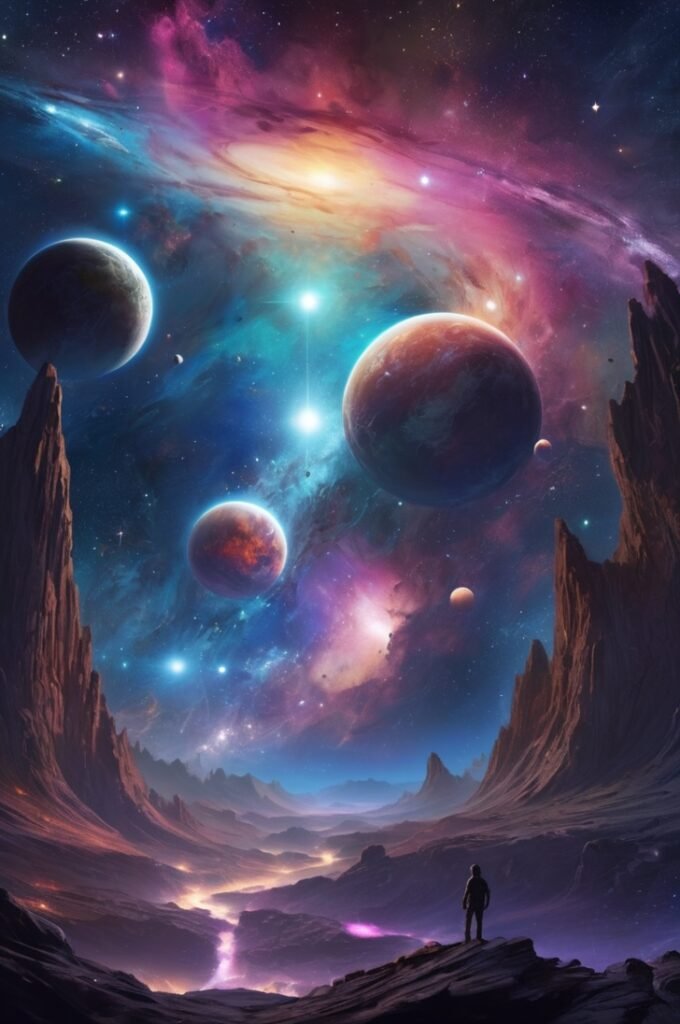












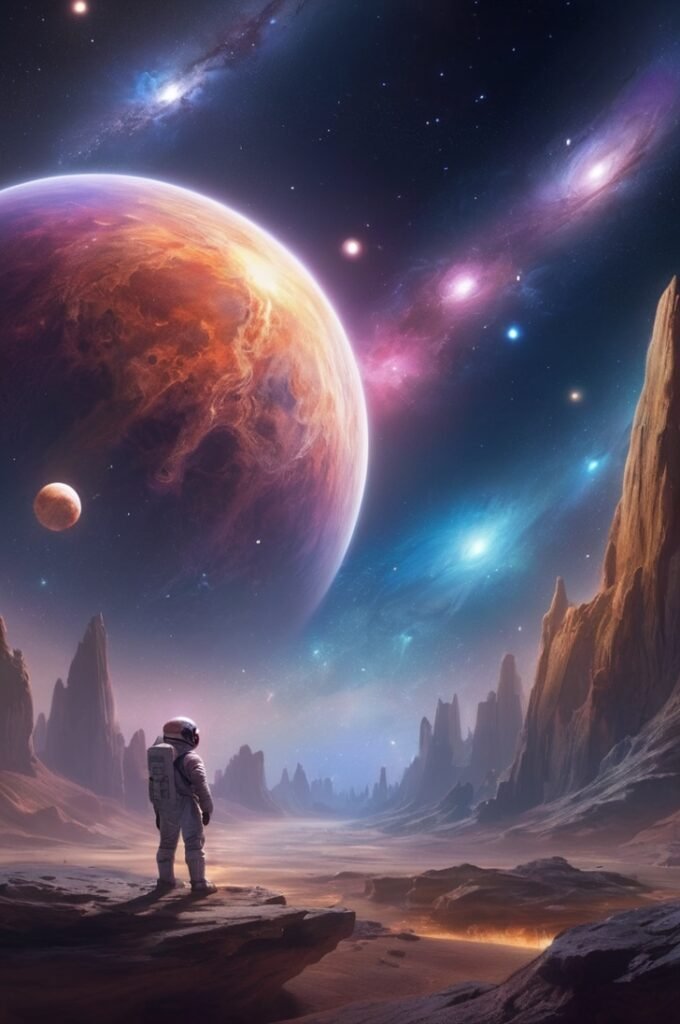











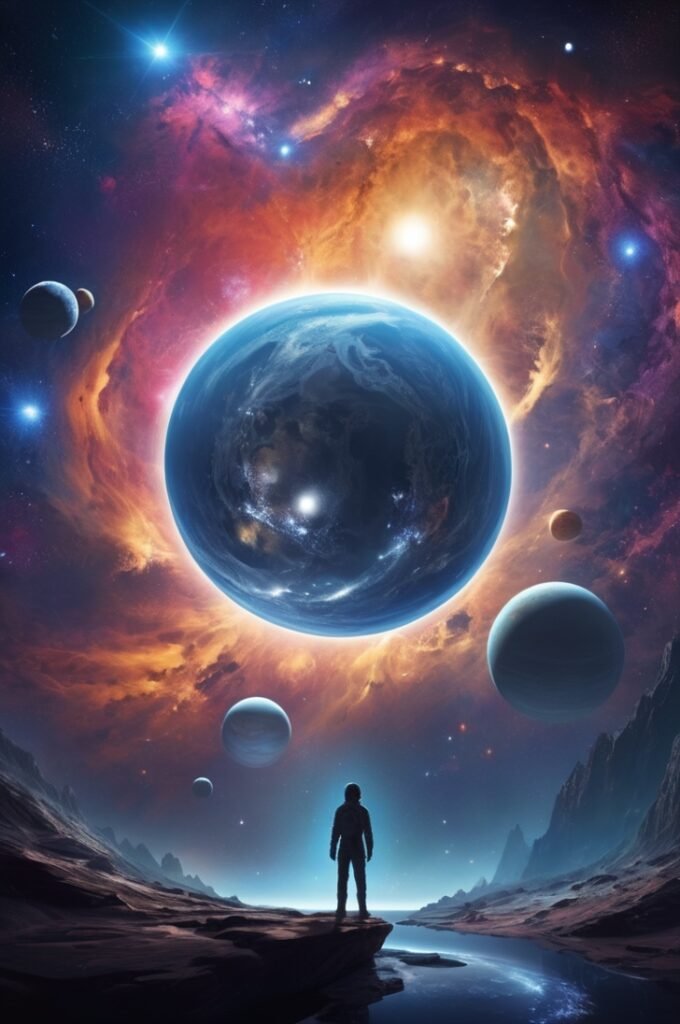























































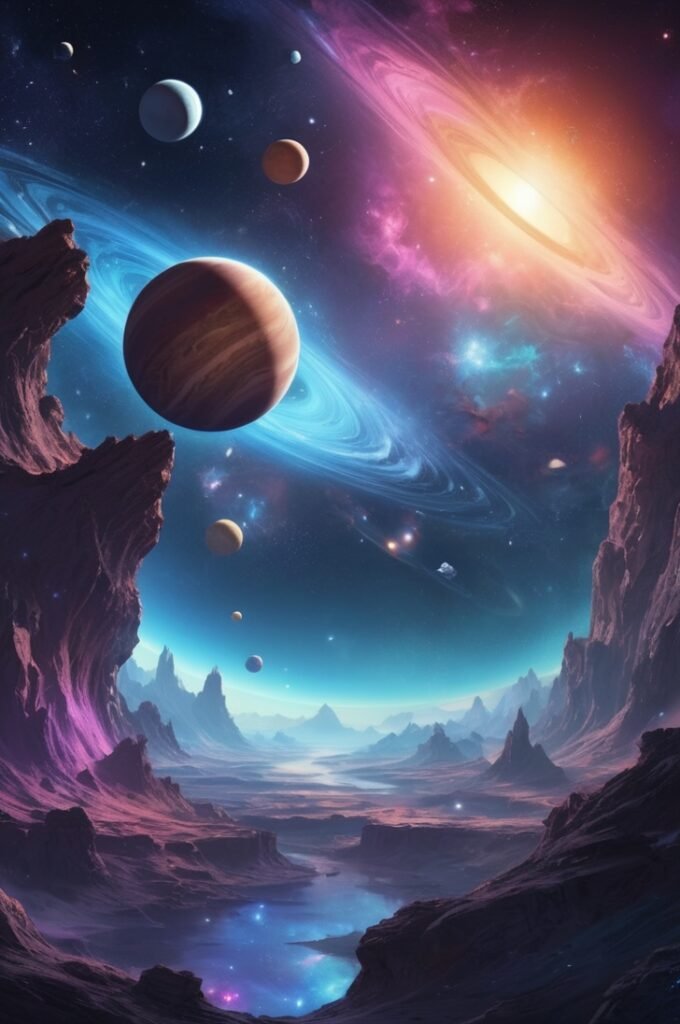















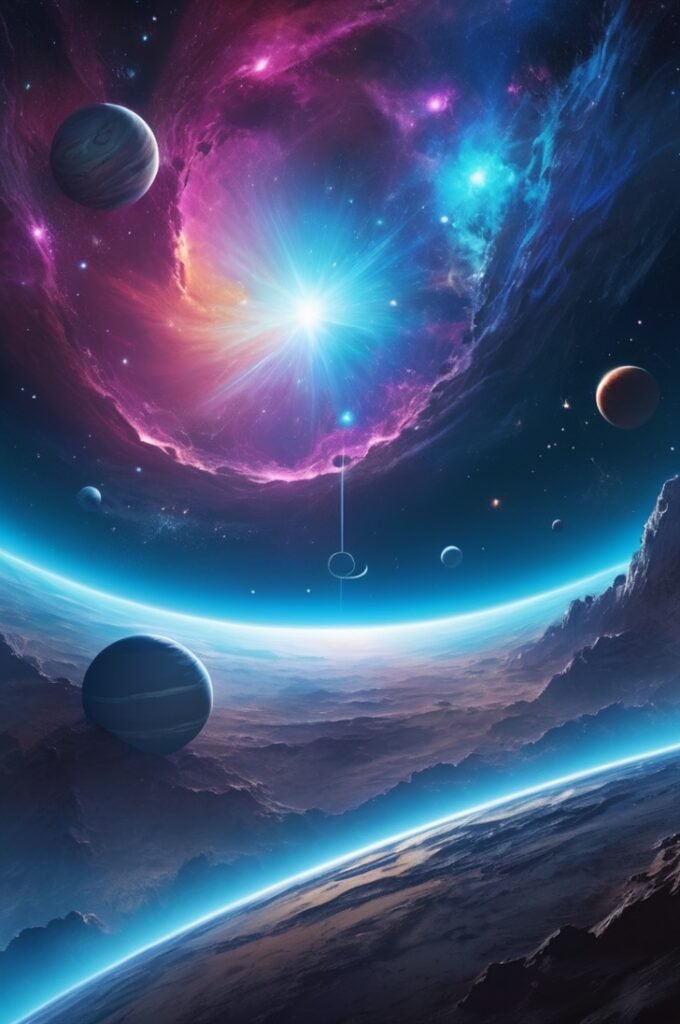




















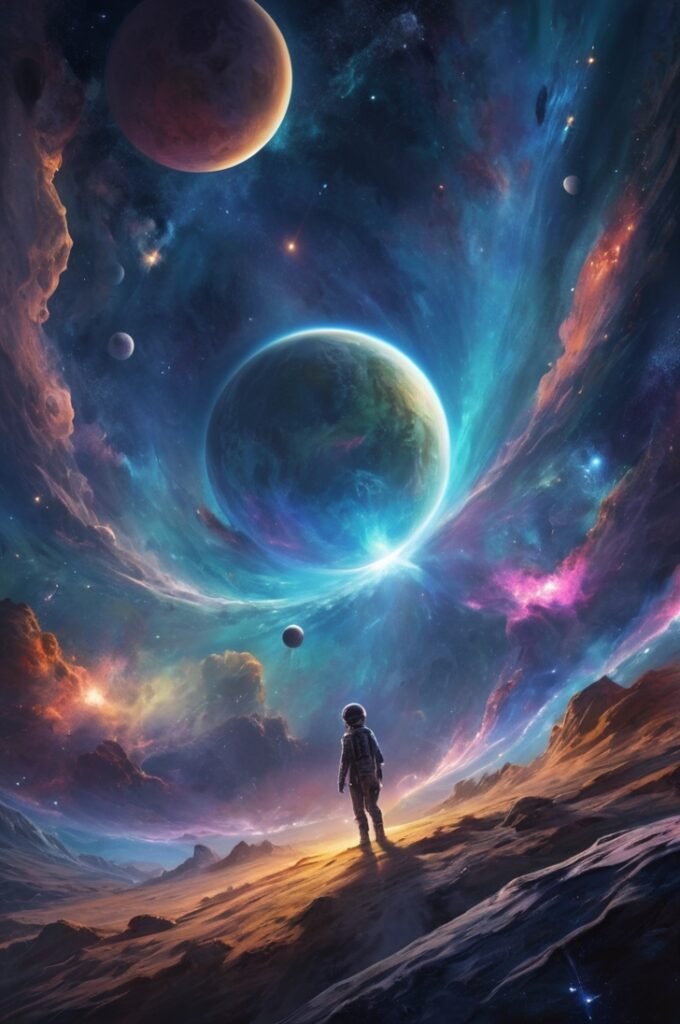













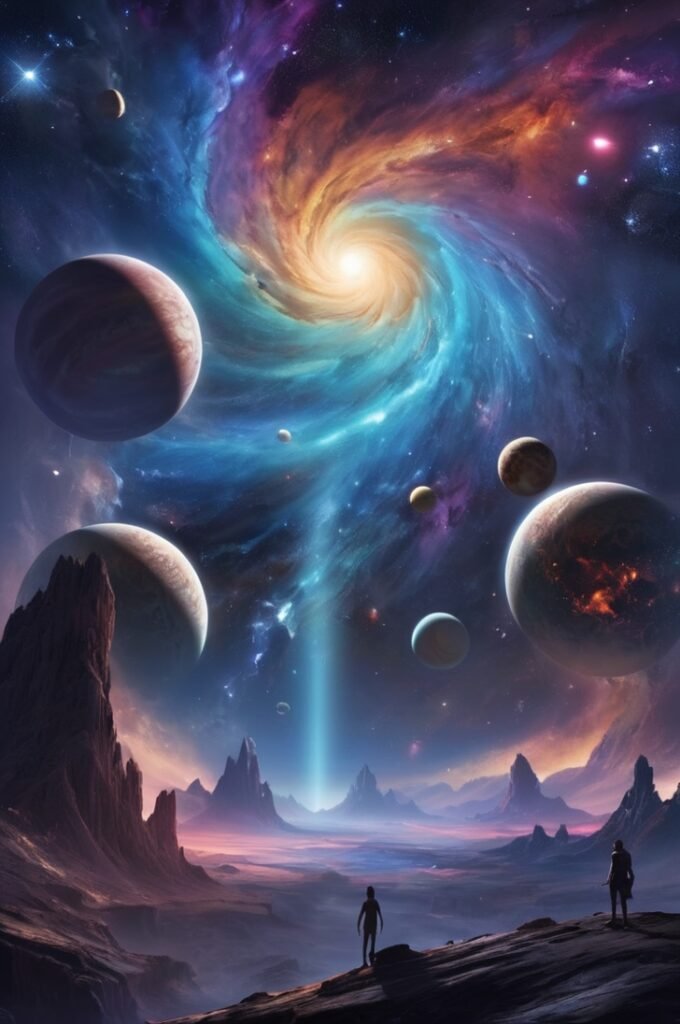

















In addition to its aesthetic appeal, digital outer space art often invites viewers to contemplate deeper themes such as exploration, existence, and the unknown. By illustrating the vastness of the universe and our place within it, artists can provoke thought and inspire wonder. Consequently, this art form not only celebrates the beauty of space but also encourages a dialogue about humanity’s relationship with the cosmos. As we delve deeper into this captivating world, we will examine the intricate details and imaginative aspects of digital outer space scenes that continue to fascinate a global audience.



































The Central Blue Planet: A Focused Element
The central blue planet in digital outer space artwork often commands attention with its striking visuals and thematic significance. This planetary depiction frequently serves as the focal point of the composition, drawing the viewer’s gaze amidst a myriad of celestial bodies. The design of the blue planet typically features a rich palette that encompasses various shades of blue, from deep navy to bright cerulean, creating a sense of depth and vibrancy. The saturation and gradient of the colors not only enhance its aesthetic appeal but also symbolize tranquility and vastness, evoking the mysteries of the universe.
In many artworks, this blue planet is portrayed with intricate details such as swirling clouds, shimmering oceans, and diverse terrains, which contribute to its overall allure. Such visual elements can serve multiple purposes, including representing Earth-like qualities that resonate with viewers, fostering a connection to their own experiences. The central placement of this blue planet in the digital artwork distinguishes it from surrounding celestial bodies, emphasizing its role as a significant entity within the cosmos.















Moreover, the symbolism of the blue planet extends beyond aesthetics; it reflects themes of hope, life, and connectivity within the vast universe. While surrounded by countless stars and nebulas, the blue planet can represent a sanctuary or a cradle of life, reminding viewers of the fragile beauty of existence. This ring of celestial bodies enhances the blue planet’s significance, as it positions it within a larger systemic context, suggesting interconnectivity among all cosmic elements. Thus, the presence of the central blue planet augments the narrative within the artwork, allowing for deeper contemplation of humanity’s place in the cosmos.



Glowing Rings: Inspiration from Saturn
The rings of Saturn have long captivated the human imagination, serving as profound sources of inspiration for artists and creators. These magnificent bands of ice particles, rock debris, and dust not only enhance the aesthetics of outer space artwork but also symbolize the majesty and mystery of planetary formations. In the realm of digital art, the glowing effect often attributed to rings can be meticulously replicated, offering a celestial glow that draws viewers into the cosmic scene.
Artists utilize various digital techniques to evoke the luminous quality of Saturn’s rings. Employing gradient shading and layering effects, creators often simulate the interplay of light and shadow that is so intrinsic to the rings. By adjusting transparency and brightness, digital artists can make the rings appear to radiate a glimmering halo, effectively mimicking the ethereal glow observed in cosmic phenomena. This technique transforms the artist’s vision into a mesmerizing spectacle that resonates with the captivating nature of space.


The significance of rings in planetary visuals extends beyond mere aesthetics. They play a crucial role in conveying the grandeur of celestial bodies and serve as focal points that draw the eye. The enchanting allure of rings, similar to those of Saturn, evokes feelings of wonder and curiosity, prompting viewers to ponder the infinite wonders of the universe. Through the incorporation of such elements, artists can create a sense of depth and dimension that elevates their work beyond traditional space depictions.
By harnessing the magical essence of Saturn’s rings, digital artists create artworks that invite viewers to explore the vastness of outer space while marveling at the beauty of our cosmic surroundings. The delicate balance between scientific representation and artistic expression enables these glowing rings to transcend their planetary context, evolving into symbols of exploration and inspiration for the audience.


Contrast with the Red Planet
The artistic portrayal of the red planet, often depicted to the left of a central blue planet in digital outer space artwork, plays a critical role in establishing a visual and thematic contrast in cosmic landscapes. This juxtaposition not only highlights the differing hues between celestial bodies but also emphasizes the diversity within our solar system. The red planet, commonly recognized as Mars, exudes vibrant shades ranging from deep crimson to rust, creating a stark and eye-catching difference against the cooler blues and greens of nearby planets, which can symbolize Earth-like qualities, life, and familiarity.
This spatial arrangement affects viewer perception significantly. The warmth of the red tones can evoke feelings of excitement, passion, or even desolation, while the cooler colors can instill a sense of serenity or contemplation. The contrast draws attention, directing the observer’s gaze and prompting emotional responses that vary depending on the interplay of colors. As each hue speaks a visual language, the combination of the fiery red and serene blue establishes tension and intrigue within the artwork.



































Furthermore, the size discrepancies between celestial bodies enhance this dynamic. If the red planet is portrayed as smaller or further away, it creates a perception of depth and scale, inviting viewers to explore the vastness of space. This spatial contrast reinforces the idea of isolation that Mars embodies, differing significantly in climate and potential for life compared to the Earth-like blue planet. In essence, this duality enriches the narrative of space imagery, providing a layered experience that invites contemplation of celestial differences, potential explorations, and our inherent curiosity about the universe. The interplay of colors and sizes evokes a rich emotional tapestry that makes digital outer space artwork both compelling and thought-provoking.





































A Background of Cosmic Wonder
The captivating realm of digital outer space artwork is often marked by a rich and vibrant gradient background, which serves as the foundation upon which the celestial narrative unfolds. Frequently composed of vivid purples, serene blues, and soft pinks, this color palette evokes a sense of awe and wonder, mirroring the vastness and mystery of the universe. The strategic use of these colors enhances the ethereal quality of the pieces, imbuing them with a dreamlike ambiance that captivates viewers and transports them into an infinite cosmic abyss.
The selection of colors is not merely aesthetic; it plays a critical role in establishing emotional resonance. The blending hues of purples may conjure feelings of mystique and depth, while soft pinks can provoke a sense of warmth and tranquility. Blues, representing the vastness of space, further engage the viewer’s imagination, permitting them to drift into the depths of their own cosmic contemplation. This careful orchestration of colors helps create a mesmerizing backdrop that anchors the focal elements of the artwork, allowing celestial bodies and abstract forms to emerge without overwhelming distractions.















Moreover, the gradient background adds depth and context to the artwork, creating a layered effect that draws the viewer deeper into the scene. It contextualizes the various cosmic elements, such as planets and stars, providing a sense of perspective and spatial relationship that enhances the overall composition. These colors can also suggest movement, simulating the dynamic nature of the cosmos, where colors seamlessly blend into one another. Such integration fosters a more immersive experience, inviting observers to explore the beautiful intricacies of the universe depicted through digital art.



































The Role of Stars and Cosmic Dust
The portrayal of stars and cosmic dust plays a pivotal role in digital outer space artwork, significantly contributing to the aesthetic and emotional impact of these visual creations. Stars, often rendered in various hues and intensities, provide a sense of depth and wonder. Their placement within a scene can guide the viewer’s gaze, leading to a greater appreciation of the vastness of the universe. By varying the size, brightness, and color of the stars, artists create a dynamic range of celestial bodies that evoke a sense of mystery and exploration.
Cosmic dust, on the other hand, adds an essential layer of texture and realism to outer space depictions. Composed of minute particles from exploded stars or remnants of cosmic phenomena, dust clouds serve to soften the starkness of the black void of space. Artists often employ techniques such as blending and layering to effectively create these ethereal clouds, which can range from gentle wisps to dense formations. This interplay between light and texture enhances the immersive quality of the artwork, drawing viewers into its depths.















The use of digital tools allows for an extraordinary degree of precision and creativity in rendering these elements. Techniques such as particle systems, layering effects, and custom brushes enable artists to simulate the complex behaviors of light as it interacts with both stars and cosmic dust. Such methods not only contribute to the visual richness but also reinforce the grandeur of the cosmos. As viewers engage with these artworks, they become participants in the narrative, exploring the evocative mysteries that lie beyond our planetary borders and resonating with the enduring beauty of the universe.















The Mysterious Celestial Body
The large celestial body positioned on the right side of the artwork commands immediate attention, serving as a focal point within this cosmic piece. Its majestic size and intricate details draw the eye, compelling viewers to explore its features and contemplate its significance in the broader universe depicted in the artwork. The visual representation of this body is characterized by a combination of smooth gradients and textured layers, which create a three-dimensional effect, adding depth and realism to the scene.
What enhances the allure of this celestial body is the radiant glow that emanates from behind it, suggesting a powerful light source residing within the cosmic environment. This glow is strategically crafted, utilizing various visual effects that mimic the diffusion of light through a vast expanse of space. The warm hues and contrast between the light and shadow effectively evoke a sense of wonder and mystery, inviting onlookers to speculate about the nature of this light source. Is it a distant sun or perhaps an undiscovered star? The ambiguity concerning its origin is intentional, encouraging a reflective engagement with the artwork.



The interplay of light and shadow contributes not just to the aesthetic value of the celestial body but also to the emotional resonance it creates. The radiant glow adds layers of meaning, hinting at the possibility of life or energy residing within the celestial body. This element of mystery enhances the overall cosmic narrative of the artwork, drawing viewers deeper into their imaginative contemplation of what lies beyond the visual. Furthermore, this ambiguity aligns perfectly with the overarching theme of cosmic exploration, making this celestial body not merely an artistic representation, but a catalyst for philosophical inquiry about the universe and our place within it.



Creating Otherworldly Atmospheres in Art
In the realm of digital outer space artwork, the creation of otherworldly atmospheres is a crucial element that defines the artistic experience. By utilizing a variety of stylistic choices, digital artists can transport viewers into realms beyond our earthly understanding. A foundational technique involves the use of vibrant color palettes; hues like deep purples, glowing blues, and luminous pinks often evoke the vastness of the cosmos. These colors can be manipulated to suggest nebulae, distant galaxies, or even fantastical alien landscapes, effectively drawing the viewer’s gaze into the unknown.
Layering and blending techniques also play a significant role in establishing the ethereal quality inherent in many digital space artworks. Artists may employ soft brushes to create gradients, seamlessly transitioning between colors, which helps to establish depth and atmospheric perspective. Furthermore, the judicious inclusion of textures, such as star fields or cosmic dust, enhances the three-dimensionality of a piece. These elements can give life to the imagined environments, reinforcing the illusion of peering into another universe.



Another essential stylistic choice is the manipulation of light and shadow. The strategic placement of light sources can create dramatic contrasts, lending a sense of mystery and intrigue to the artwork. Such contrasts can evoke a feeling of exploration, encouraging the audience to contemplate the vastness of the universe and the possibility of untold stories hidden within celestial bodies. Moreover, digital artists frequently incorporate themes of exploration and imagination into their narratives, allowing viewers to reflect on humanity’s place in the cosmos and its ongoing quest for knowledge. As these artistic techniques converge, they foster an intimate connection between the viewer and the artwork, inspiring a sense of wonder that transcends the traditional boundaries of imagination and creativity.



Conclusion: The Timeless Allure of the Universe
In summarizing the significance of digital outer space artwork, it is essential to recognize how these creations encapsulate the grandeur and mystery of the cosmos. Throughout history, humanity has looked to the stars, driven by an innate curiosity to explore the vastness beyond our planet. Digital artists harness this fascination, employing technology to create breathtaking representations of celestial bodies, cosmic phenomena, and distant galaxies.
The main elements of such artwork often include vibrant color palettes, intricate details, and imaginative interpretations of astronomical concepts. By depicting black holes, nebulae, and expansive star fields, artists not only pay homage to the natural wonders of the universe but also stimulate the viewer’s imagination about the limitless possibilities that space offers. This artistic expression serves as an invitation to deeper exploration, invoking a sense of awe and appreciation for complexity and beauty found in the cosmos.



The impact of digital outer space artwork on audiences cannot be overstated. It has the power to transcend cultural and geographical boundaries, uniting people in their shared admiration for the universe. Each piece invites viewers to ponder their place within the vast expanse of space, while also sparking discussions about science, philosophy, and the potential for discovery. As technology advances, the future of cosmic representations seems bright, with new tools allowing artists to push boundaries and explore uncharted territories of creativity and innovation.
In conclusion, the timeless allure of the universe, as captured through digital art, serves not only as a celebration of cosmic beauty but also as a reminder of the wonders that lie beyond our immediate reality. This genre of artwork encourages continuous exploration and appreciation for the diversity that outer space offers, enriching our understanding of both art and the universe.



RELATED POSTS
View all


